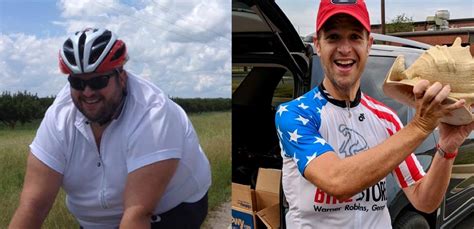Rapid Weight Loss Through Cycling: Miles Matter
Cycling is a fantastic way to shed those extra pounds and improve your overall fitness. It's a low-impact exercise that's easy on the joints, making it accessible to a wide range of fitness levels. But how much cycling do you need to do to see significant weight loss? The short answer is: it depends, but the miles definitely matter! This article will delve into the relationship between cycling, distance, and rapid weight loss, addressing common questions along the way.
How Many Calories Does Cycling Burn?
The number of calories burned cycling depends on several factors: your weight, the intensity of your ride, the terrain, and the duration of your workout. Generally speaking, a person weighing around 150 pounds can burn anywhere from 300 to 600 calories per hour of moderate-intensity cycling. Increasing the intensity, riding uphill, or extending your ride will significantly increase calorie expenditure. For rapid weight loss, aiming for longer rides and incorporating intervals (periods of high-intensity effort interspersed with recovery periods) is key.
How Much Cycling for Weight Loss?
There's no magic number of miles to guarantee rapid weight loss, as individual results vary. However, consistency is crucial. Aiming for at least 150 minutes of moderate-intensity cardio per week, as recommended by most health organizations, is a good starting point. This translates to roughly 2-3 cycling sessions per week, each lasting around an hour or more. If you're aiming for more rapid weight loss, increasing the frequency and duration of your rides is beneficial. Consider incorporating longer weekend rides to boost your weekly mileage.
Can Cycling Alone Lead to Rapid Weight Loss?
While cycling is an excellent tool for weight loss, it's rarely sufficient on its own for rapid results. Combining cycling with a healthy, calorie-controlled diet is essential. Rapid weight loss often necessitates a caloric deficit, meaning you burn more calories than you consume. Cycling helps you burn calories, but you also need to carefully manage your dietary intake. A registered dietitian or nutritionist can help you create a personalized plan to support your cycling efforts.
What are some dietary changes that support weight loss while cycling?
This is a crucial question. Simply put, focus on whole, unprocessed foods. Prioritize lean protein sources (chicken, fish, beans, lentils), plenty of fruits and vegetables, and complex carbohydrates (whole grains, brown rice, quinoa). Limit processed foods, sugary drinks, and excessive saturated and unhealthy fats. Remember, proper hydration is vital, especially during and after intense cycling sessions.
What Type of Cycling is Best for Weight Loss?
Various types of cycling can contribute to weight loss. Road cycling provides a good cardiovascular workout and allows you to cover significant distances. Mountain biking, with its varied terrain, adds an element of strength training and can burn even more calories. Spinning classes offer a structured and motivating environment, allowing you to control intensity and track your progress. Ultimately, the best type of cycling is the one you enjoy and are most likely to stick with consistently.
Is it better to cycle at a high intensity or low intensity for weight loss?
Both high-intensity interval training (HIIT) and low-intensity steady-state (LISS) cardio have their benefits. HIIT burns more calories in a shorter time, while LISS improves cardiovascular fitness and endurance. A balanced approach, incorporating both types of cycling, can be the most effective.
How to Maximize Weight Loss Through Cycling?
To maximize weight loss through cycling, consider the following:
- Increase your mileage gradually: Don't try to do too much too soon. Start slowly and increase your distance and intensity progressively to avoid injury and burnout.
- Monitor your progress: Track your weight, measurements, and cycling distances to stay motivated and assess your progress.
- Listen to your body: Rest when you need to, and don't push yourself too hard, especially when starting.
- Stay hydrated: Drink plenty of water before, during, and after your rides.
- Fuel your body properly: Eat a balanced diet to support your workouts and recovery.
Rapid weight loss through cycling is achievable, but it requires a combination of consistent effort, a well-structured training plan, and a healthy diet. Remember to consult with your doctor or a qualified healthcare professional before starting any new exercise program, particularly if you have any underlying health conditions. The miles matter, but so does a holistic approach to fitness and nutrition.

